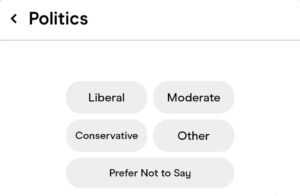Back in the early 1990’s, Greg Pritchett was incarcerated on a drug charge. After being released from jail, he became homeless and resorted to a life on the streets.
“I lost everything I had,” said Pritchett.
His only way of earning an income was by selling Streetwise.
Pritchett is now director of distribution at StreetWise, a magazine sold by once unemployed and homeless people on the streets of Chicago and surrounding suburbs. The magazine, which sells for $2, enables vendors to earn a living. Many use their profits to find to pay rent, taking them off the streets.
Created in 1992, the nonprofit is based at 1201 W. Lake St. and employs 150 vendors; in the warm weather months, that number jumps to 185. StreetWise has a circulation of nearly 30,000 each month, and most of its readers are middle-aged, affluent and disproportionately women.
The magazines are sold to the vendors for 75 cents each, and the vendors resell them for $2, said Executive Director Bruce Crane, who was a board member for 10 years and a volunteer for four before going to work at StreetWise full-time.
StreetWise was a newspaper for 16 years before becoming a magazine two years ago,
“We started out as a monthly publication, then a few years later it went to twice a month, and then about eight years ago became weekly,” said Crane.
In addition to being a newspaper, StreetWise is also a social service agency that offers job training, help for veterans, addiction counseling and education.
Crane said StreetWise helps the community by giving multiple opportunities to people who need it most. He added that the goal is to make the magazine better and appeal to more people.
One goal of the staff is to improve the magazine’s quality, he said, which will make it easier for the vendors to sell.
Crane said a having a better looking product, like a magazine, really motivates the vendors to want to get involved with StreetWise and sell more. He said vendors also learn about running a small business.
The staff decided to turn StreetWise from newspaper to magazine because advertisers wanted to move away from black-and-white to four-color graphics, Crane said. He added that marketing studios showed that StreetWise should increase the quality and content.
He said the move to a glossy magazine format was also made it easier to attract more freelance writers.
“It would be easier to attract the volunteer writers that are that are essential to our model. . . as they wanted their bylines to be in higher quality publications,” Crane said.
He also said that the publication had been the same price – $1 – for 16 year; a price increase gave the vendors more income.
To become a vendor, those interested must attend a three-hour orientation, then probation with more training during the next 30 days, Crane said.
The orientation, held at StreetWise’s office, teaches potential vendors the do’s and don’ts of how to sell the magazine and make a profit.
Bill Klee, 52, a full-time vendor in the Lincoln Park neighborhood for three years, said he sells magazines Mondays through Thursdays. Klee said he sells for eight to 10 hours a day, on the corner of Fullerton and Sheffield Avenues.
What he most enjoys about Streetwise is the flexibility of his work schedule.
“If you don’t want to come, you don’t have to,” he said.
Pritchett, distribution director, said he has trained more than 6,000 people for positions at StreetWise.
“Knowing that I’m impacting people’s lives by helping them find jobs is what keeps me motivated,” he said.

![Reblog this post [with Zemanta]](http://img.zemanta.com/reblog_c.png?x-id=5d3ef970-b4aa-46e4-9e75-65381f76a442)





Be First to Comment